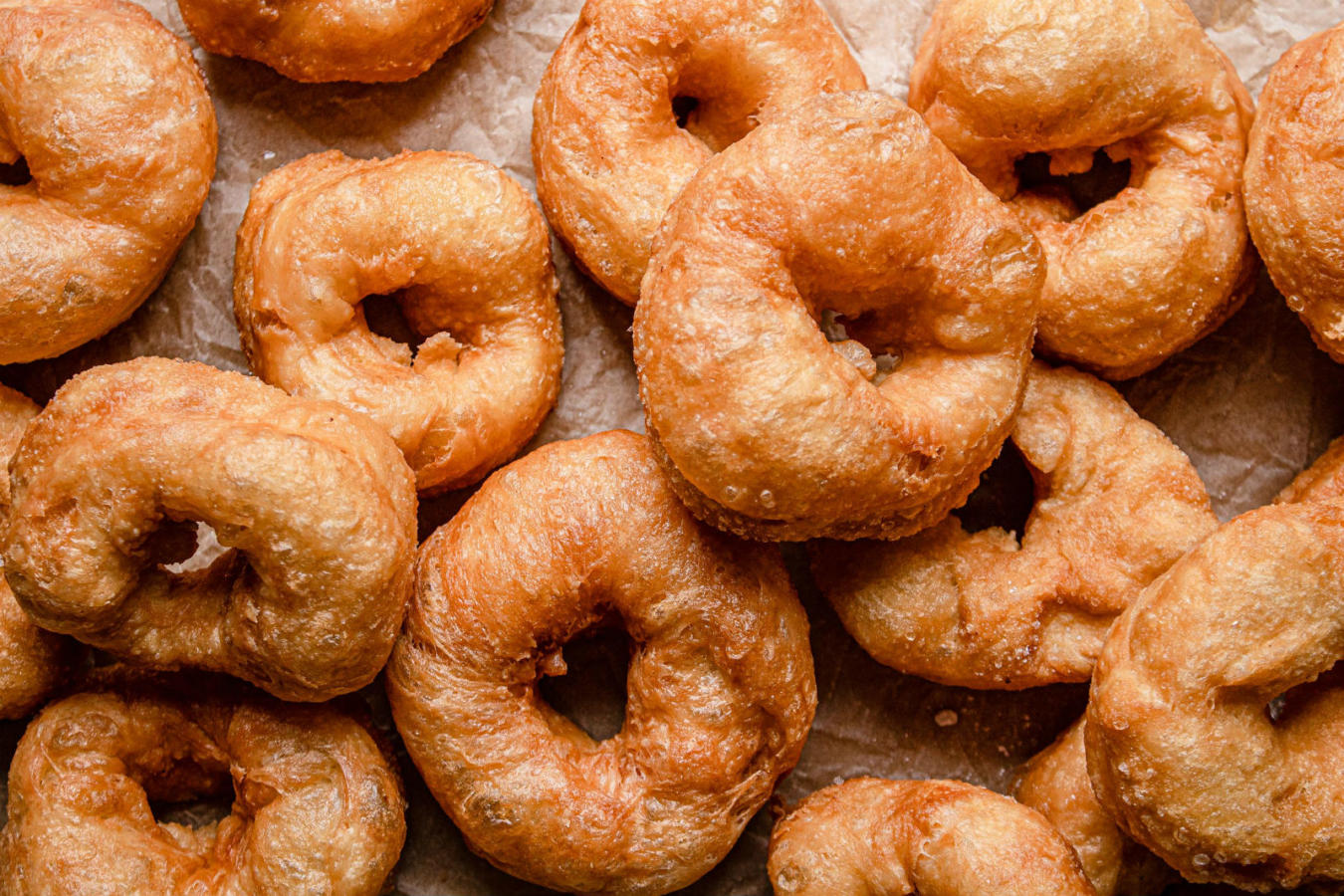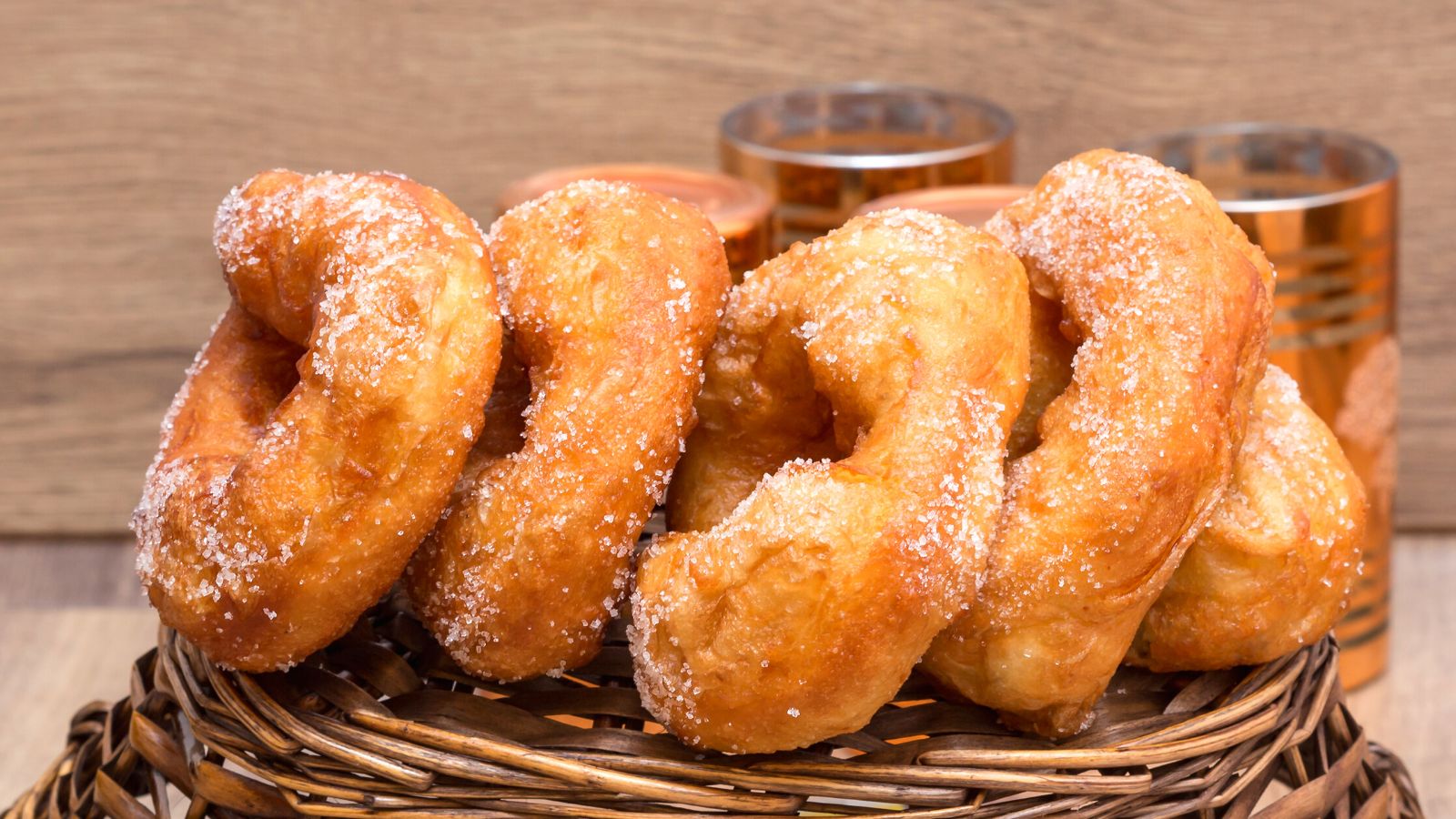Some years ago, while celebrating Hanukkah at the home of Moroccan Jewish friends, I got my first taste of sfenj. I knew (and loved) the Israeli jelly donuts called sufganiyot, but sfenj, while also donuts, were something different. The yeasted dough was familiarly puffy, but instead of being shaped into a plump round, it was formed into rings. And instead of sufganiyot’s jam filling and snowy cap of powdered sugar, my friends served sfenj two ways: dipped into granulated sugar or generously drizzled with an orange-blossom-scented syrup. Naturally, I was smitten with this new-to-me expression of Hanukkah frying.
A few years after tasting sfenj, I learned about sfingi — another doughy fritter, which hails from Southern Italy and can be found in many Italian American bakeries. The term “sfingi” refers to a couple of different pastries, including simple, free-form donut holes rolled in sugar, and a more elaborate fried round that gets topped or filled with sweetened ricotta (think: cannoli filling) and sweet Amarena cherries. In Naples, the fritters are sometimes called zeppole, but in Sicily and other parts of Southern Italy, they usually go by sfingi or, to further confuse matters, sfinci.
Some Italian families make sfingi to celebrate Christmas, but they really shine on March 19th, or Saint Joseph’s Day, which honors the Virgin Mary’s husband. On that day, many Italians — particularly Sicilians who consider St. Joseph to be their patron saint — pull out all the stops to throw a feast that often ends with sfingi and other decadent sweets.
Sfenj. Sfingi. Two donuts with remarkably similar names. There had to be a connection, right? As it turns out, the North African Hanukkah treat and Southern Italy’s feast-day fritter likely do share a common ancestor. The name for both pastries comes from the Arabic word “isfenj,” which translates to “sponge,” and refers to the way dough soaks up oil while it fries, and also to its bouncy texture. (Interestingly, sufganiyot also means sponge in Hebrew, suggesting a linguistic connection between all three donuts.)
The Nosher celebrates the traditions and recipes that have brought Jews together for centuries. Donate today to keep The Nosher's stories and recipes accessible to all.
This connection also hints to the influence that Arabic cuisine had across both North Africa and Southern Italy. According to some historical accounts, sfenj originated in Moorish Spain in the Middle Ages. (The era and region similarly gave rise to the traditional Sephardic Hanukkah dish, bimuelos — small, sweet fritters that are often round in shape.) From there, the dish spread to places where Moorish traders traveled, including the Maghreb – North African countries that border the Mediterranean Sea.
Today, sfenj are popular across Morocco, Algeria, Tunisia and Libya. In Morocco, they were traditionally prepared by sufnajeen — bakers dedicated to the craft of making sfenj. They were (and are) considered an everyday breakfast pastry or street food snack, and are served alongside coffee or mint tea.

Jewish Moroccans, meanwhile, adopted the fritter for Hanukkah, when Jews traditionally eat foods fried in oil. They introduced sfenj to Israel when they immigrated there in the mid-20th century. In Israel, however, sfenj never caught on in quite the same way as sufganiyot. Moroccan Jewish families still make them, and they’re available in food markets nationwide, but you are not likely to see piles of sfenj in bakery windows across Tel Aviv and Jerusalem, they way you will sufganiyot.
Sfingi, meanwhile, hail from Palermo, Sicily’s capital. The recipe for the ricotta-cream-filled version was invented by nuns, who adapted the dessert from Arabic cuisine and dedicated it to St. Joseph. In the weeks leading up to St. Joseph’s Day, you will find sfingi di San Giuseppe – in all of its fried, cream-filled glory — in bakeries across Southern Italy, and in communities across the world that are home to Southern Italian communities.
I like to joke that the reason Hanukkah lasts for eight nights is so home cooks can dedicate each night to a different fried treat. From potato latkes and sufganiyot to bimuelos and sfenj, there is no shortage of Hanukkah dishes to celebrate. But this year, if my patience for frying (and my appetite for fried foods!) hold, I might just add sfingi to my Hanukkah menu.



